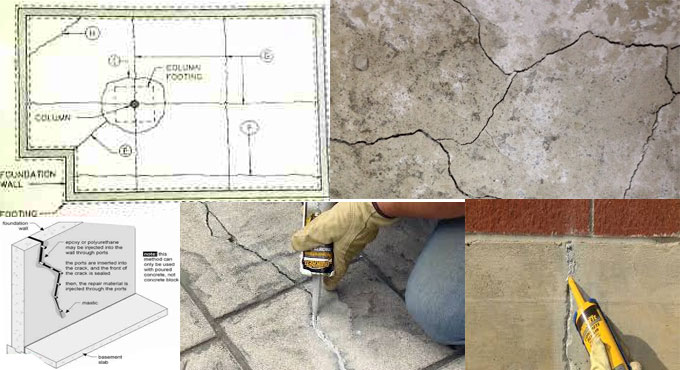This article sheds light on how to seal and repair cracks in concrete floors, poured concrete slabs, foundations, walls, or other masonry.
Information is provided for all the existing processes which are useful to seal control joints or cracks taking place in those building surfaces.
Information is also given for the properties, general process, and benefits and disadvantages of each process like control joint inserts, masonry caulks, radon crack sealants, semi rigid epoxy resin crack fillers, special poly urea caulks designed as a joint filler - polyurethane foam injection to seal cracks, grouts along with portland cement, latex-modified, epoxy, modified epoxy-supported, and furan grouts or other products applied to fill or seal cracks in concrete or other masonry surfaces & structures.
Discussion is made on how to select among and utilize the alternative procedures for repairing or sealing cracks in masonry surfaces like poured concrete floor slabs, concrete foundation walls, or brick or masonry block foundation walls. Application of epoxy sealants, polyurethane foam sealants, and hydraulic cement crack repair sealants.
This article series also explains how to identify and analyze different types of foundation failure or damage, like foundation cracks, masonry foundation crack patterns, and moving, leaning, bulging, or bowing building foundation walls.
Types of foundation cracks, crack patterns, variations in the meaning of cracks in several foundation materials, site conditions, building history, and other evidence of building movement and damage are explained to facilitate identifying foundation defects and to allow the inspector for isolating cosmetic or low-risk conditions from those expected to be crucial and potentially costly to repair.
The focus is also given on a list of materials utilized to fill poured concrete slab control joints. Also learn how to seal a cracked masonry foundation wall or floor slab. Typical concrete crack groundwork for sealant with an epoxy product.
Application of Polyurea as a control joint filler or crack sealant in concrete slabs (Polyurethane Foam Injection Method). Utilization of Epoxy-supported Grouts as a control joint or crack filler in concrete slabs or walls. Complete lists of the Types of Tile Grouts, their Bonding Agents and other Properties. As well as Concrete expansion joint sealant products, epoxies, caulks.
Utilization of Hydraulic Cement for Repairs in Concrete Slabs, Foundations, or Masonry Block/Brick Walls.
To get more details, go through the following link inspectapedia.com

~~~~~~~~~~~~~~~~~~~~~~~~~
Published By
Rajib Dey
www.constructioncost.co
~~~~~~~~~~~~~~~~~~~~~~~~~
Published By
Rajib Dey
www.constructioncost.co
~~~~~~~~~~~~~~~~~~~~~~~~~
No comments:
Post a Comment